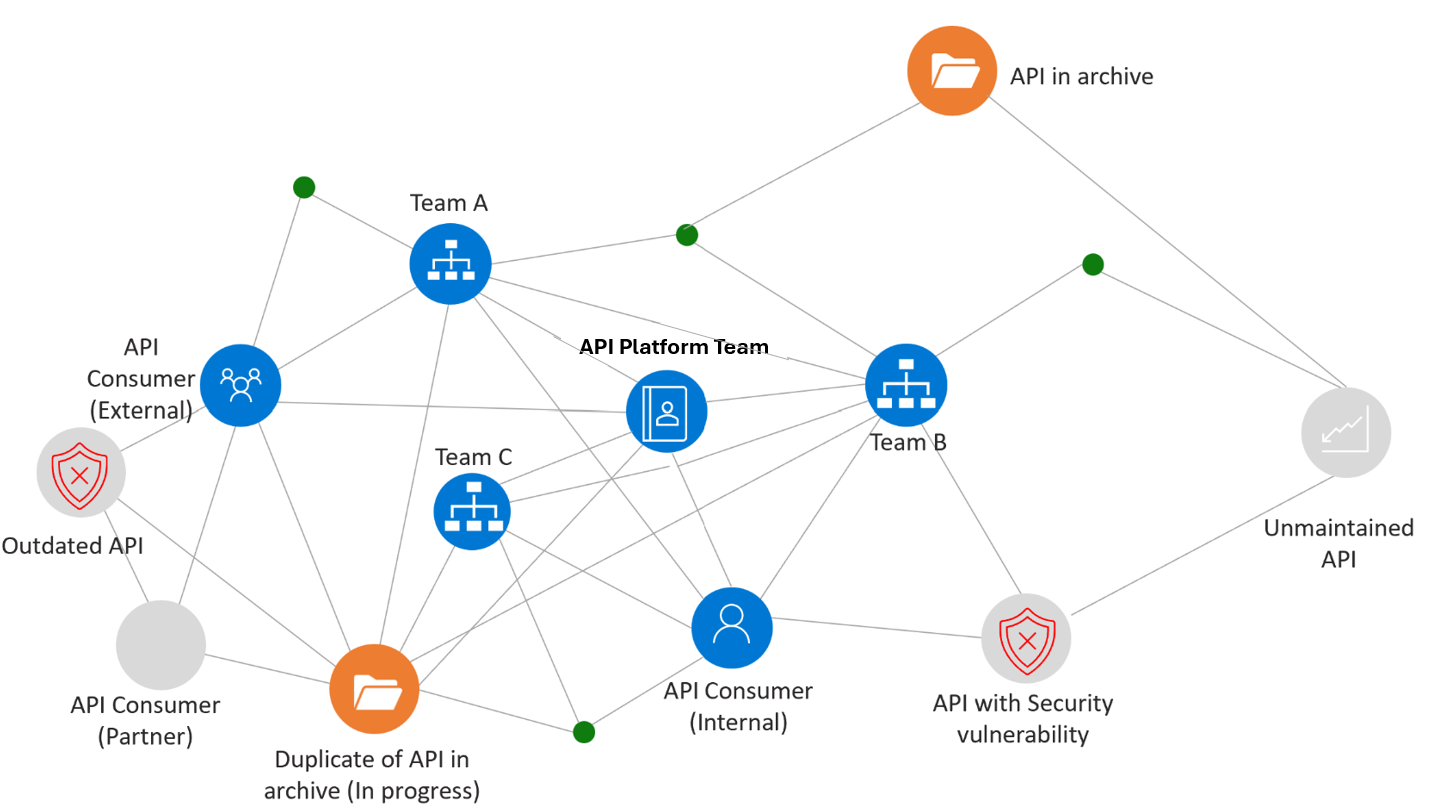Introduction
Modern software is powered by Application Programming Interfaces (APIs). Reflecting on the applications your organization has built over the past year, it's likely most features are powered by APIs. At-scale, this means that many organizations can have hundreds, thousands, or even tens of thousands of APIs that are either built internally or integrated with external APIs. With the increasing demand for software, and with APIs as the foundational layer powering this software, the number of APIs your team will work with is anticipated to increase, if not accelerate rapidly.
Scenario
Contoso Corporation is a fictitious company that implements microservice architectures, taking an API-first approach. In its earlier years, the organization only had a few teams building APIs, and often these were the same teams that consumed those APIs. Over time, the organization grew, and many teams are now producing and consuming APIs that are developed both internally and externally. However, API Platform engineers at Contoso reported that they're approaching an API Sprawl state (a state where organizational APIs increase exponentially and uncontrollably), and foresee other downstream issues, including:
Poor API discoverability and reuse - Without a clear understanding of available APIs, developers may end up creating new APIs that replicate existing features, leading to wasted time and resources.
Shadow, ungoverned APIs - Most developers may stop managing and maintaining some APIs in isolation as they move on to other projects.
Potential security threats – The API Platform team may not be able to effectively enforce organizational security policies, potentially leading to vulnerable and unsecured endpoints.
Inconsistent API design - Developers may not all produce APIs that comply with the organization's unified API Design principles, and more development resources will need to be utilized to redesign inconsistent APIs that may be discovered after being rolled out.

At this point, the API Platform team started to brainstorm on an effective and seamless solution to prevent their organization from getting to this state. If your organization also needs to adopt a strategy to centralize all of your APIs for easier tracking and governance, then this is the right module for you.
Learning objectives
In this module, you will:
- Understand what Azure API Center is and the benefits it provides.
- Explore how API Center empowers your organization with centralized API inventory, governance, discovery, and consumption.
- Know how to get started with Azure API Center for your organization.
- Explore advanced integrations with developer tools such as Visual Studio Code.